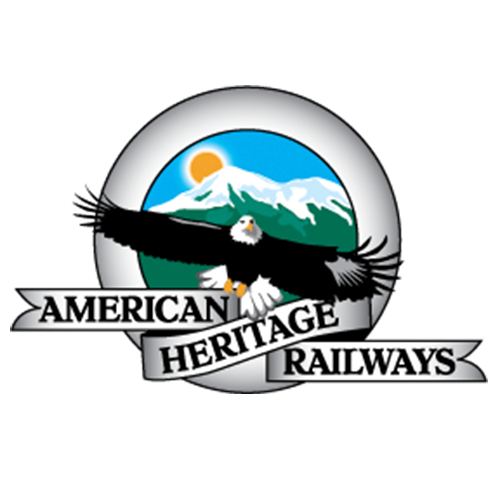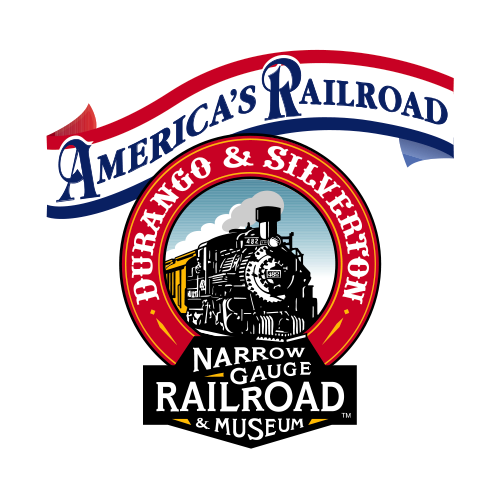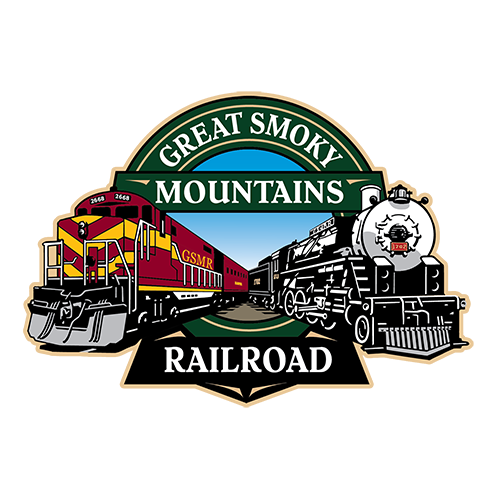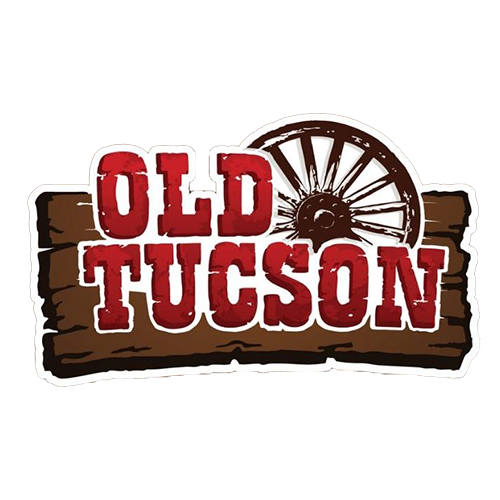
Locomotive 493: Conversion From Coal-Burning to Oil-Fired Update
January brought significant advances in the conversion of locomotive 493 from coal-fired to oil-burning. The most significant progress was in the re-installation of the four driving wheels and the removal of the lead and trail wheels.
Installing Drivers: The Process
The process of installing drivers is one that occurs 2-3 times annually for the D&S roundhouse shop. It is an established procedure that involves lowering the driver complete with journal boxes already installed into the pit, spotting the locomotive over it, removing the binders (bottom removable section of the frame), removing the rails above the pit, lifting the driver into place, putting the rails back into place, installing the bronze shoes and wedges, and finally reinstalling the binders. This exercise is repeated four times and the full process takes an entire day.
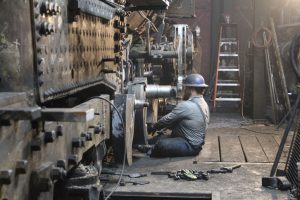
Nick Breeden adjusting wedges
Spring Rigging:
After installing the drivers, the next step is to “lace up” the spring rigging, install all the suspension, which also allows for the removal of the shop dolly wheels, and then reinstall them under #481, the next locomotive scheduled to receive driver work.
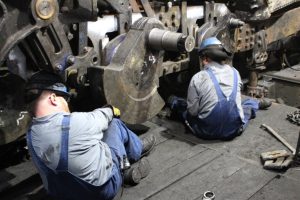
Scott Valentine and Anthony Maze dropping wedges and prepping for spring rigging install
Spring work is accomplished by lifting the engine up on jacks. It often requires loosening the newly-installed shoes and wedges to allow the drivers to move freely in the frame when lifting the engine. Engine #493 was only “laced up” on the drivers and chained down to the frame ahead of the first and behind the last drivers in order to keep the suspension off the lead and trailing wheels.
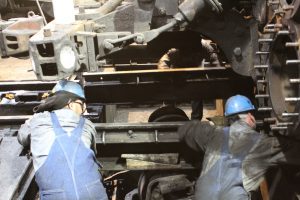
Anthony Maze and Will White dropping the pony truck
The process of removing these wheels is somewhat similar to removing the drivers with the exception that the entire lead and trailing frames are removed with the wheels. Once out, they are cleaned with a pressure washer and then sent to the machine shop for rebuilding. They are now in the process of being rebuilt.
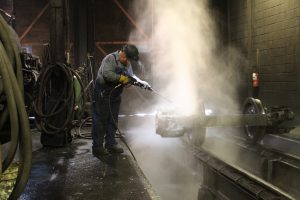
Scott Valentine cleaning the trailing truck
Running Gear:
Additional running gear work is well on its way to completion. Pistons and rings, valve rings, crossheads, rod brasses, and brake rigging have all seen significant work.
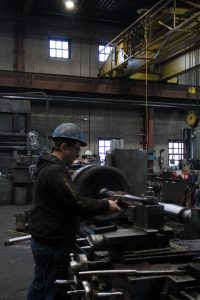
Joe Dailey polishing piston rods
On the boiler side of things, the stay bolt conversion is progressing nicely with about 2/3rds of the conversion completed. Other than stay bolts and the installation of the tubes, much of the boiler work is complete.
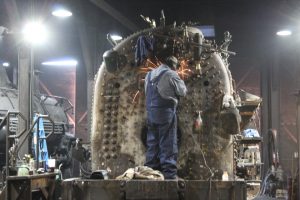
Andy Begay cutting stay bolts
Lastly, various other components are complete or well underway. The cab is finished and awaiting installation. The cab floor and running boards are under construction; the rear tender beam is close to being installed. On the appliance side, the water column, water glasses, steam fountain, lubricators, dynamo, and blowdown valves are all completed.
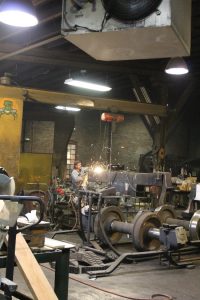
Charlie Moore finishing up an end beam


